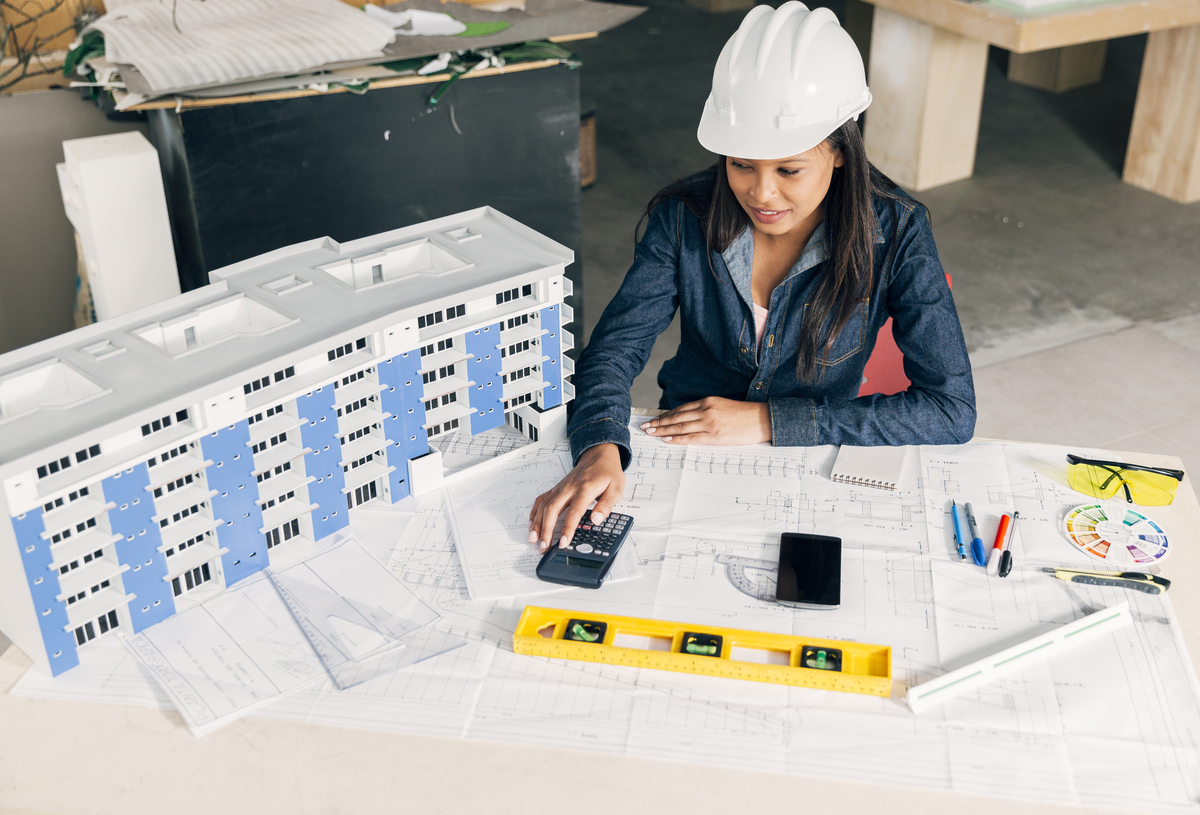Exclusive Neuroject Article: 5D BIM, which stands for five-dimensional building information modeling, involves the real-time creation or development of comprehensive parametric building components within a virtual model. Skilled users can utilize this technology to construct models that illustrate the impact of changes in materials, layouts, square footage, and other design elements on both the appearance of a facility and the associated construction costs and schedules.
Traditionally, the objective during pre-construction and early design conceptualization has been to establish an unalterable design. Rather than allowing the design to evolve, the aim is to produce architectural drawings that remain unchanging and serve as the basis for construction. However, due to the inherent imprecision of early-stage drawings, achieving an accurate “frozen design” stage and fully understanding all aspects of design intent—such as how facilities will function, how they will be constructed, and their associated costs—has proven challenging. Consequently, this process often leads to unforeseen, costly, and time-consuming design changes during the construction phase of many projects.
The pre-construction and early-stage design phase is a critical period that necessitates consensus regarding the scope of work, which should be based on the owner’s requirements and expectations, as well as precise cost estimates for project deliverables. In today’s context, 5D BIM enables owners, architects, builders, and engineers to collaborate from the very beginning of the design process, allowing them to not only evaluate the current design but also assess how design revisions or alternatives will impact the project from its initial stages through to completion. All aspects, including appearance, cost, schedule, and constructability, can be visualized and evaluated.
Table of Contents
What is 5D BIM? Understanding BIM Basics
Building Information Modeling (BIM) has rapidly gained worldwide popularity. It represents a time and cost-effective approach that has become the norm for many projects, facilitating highly efficient and collaborative planning, design, and construction processes.
In the United States, nearly half (49%) of construction firms employ BIM for visualization purposes, reflecting the industry’s substantial growth. Projections indicate a robust compound annual growth rate (CAGR) of 14.3% through 2027, with experts foreseeing revenue reaching $15.06 billion.
An increasing number of projects mandate BIM, often as a requirement for government initiatives. For instance, the UK adopted BIM mandates following an analysis revealing potential savings of up to 20% in construction costs. In practical terms, utilizing BIM at LOD (Level of Development) 300-400 resulted in savings of approximately £900 million (equivalent to roughly $1 billion USD) over a six-year study period.
Building Information Modeling (BIM) constitutes a collaborative process that facilitates the joint efforts of multiple stakeholders and architecture, engineering, and construction (AEC) professionals during project planning, design, and construction via a 3-D model. It offers real-time updates at each project stage.
Leveraging advanced building and design solutions, BIM generates virtual representations that proactively identify clashes, reducing risks and surprises during construction while potentially lowering overall project expenses.
A synchronized database empowers owners, project managers, estimators, and other stakeholders to make data-driven decisions both before and after project completion. BIM’s utility extends to estimating, budgeting, and long-term building operations and management throughout the building’s lifecycle.

What do BIM Dimensions Mean?
BIM dimensions emerged to distinguish between modeling in two or three dimensions, reflecting the evolution from manual drawing boards to early 2D CAD systems and subsequently 3D modeling tools.
In this context, 4D BIM represents the incorporation of scheduling information to depict construction sequences, while 5D BIM involves the inclusion of financial cost data. It’s worth noting that there’s limited international consensus regarding these “dimensions,” and cost may not truly constitute a dimension but rather additional information.
At NBS and within international standards, these dimensions aren’t typically referenced. Instead, the focus is on clearly identifying the specific information that needs to be modeled, such as health and safety, fire safety, inclusive design, or sustainability. Project requirements should specify the necessary information fields and formats, like embodied carbon measurements or cost in pounds sterling and months.
Nevertheless, the more commonly used “dimensions of BIM” are explored below to facilitate discussions with clients, showcase various BIM applications, and refine precise project requirements.
2D BIM encompasses a digital geometric model with X and Y axes, with associated information. Early CAD systems were essentially 2D models, enabling quicker and more accurate generation of plans and sections compared to manual drawing boards.
3D BIM involves a digital geometric model incorporating X, Y, and Z axes, along with additional information. These 3D modeling tools offer advantages such as generating 2D views, creating schedules, and identifying geometric clashes, thereby enhancing accuracy, efficiency, and error reduction.
4D BIM integrates scheduling information to depict construction sequences, aiding visualization of construction progression over time. This is particularly valuable from a contractor’s perspective, showcasing collaboration between design and construction teams through 3D model coordination.
5D BIM typically includes cost information in the model. When discussing 5D BIM, it’s essential to specify requirements regarding capital or operational costs, pre-tender estimates, responsibility for adding this data, and measurement methods.
6D BIM involves facility management information for some, but industry consensus is lacking. Precise definitions of required information are crucial to ensure clarity.
7D BIM may involve sustainability data, demanding specific details regarding data types, scope, units, rules of measurement, and so on.
8D BIM, for certain stakeholders, pertains to health and safety information. As with 6D and 7D BIM, explicit definitions of required data are vital for clear understanding among all parties involved.
Benefits of Implementing 5D BIM
When you embark on the implementation of 5D BIM, you unlock a range of advantages that were previously beyond your reach. 5D BIM facilitates the real-time linkage of your 3D model with budgetary and cost-related aspects, resulting in streamlined budgeting, accelerated decision-making, and enhanced accuracy within your BIM model. Here are some of the benefits you can expect from the implementation of 5D BIM:
- Precise Cost Estimation and Prediction: Implementing 5D BIM empowers contractors to create precise cost estimates by accurately identifying quantities of building components within 3D models. This capability allows project stakeholders to establish a dependable cost estimate right from the project’s inception. Improved cost estimates translate into reduced risks and losses stemming from mismanagement and miscommunication.
- Detailed Quantity Take-offs: Studies in the industry have shown that estimators invest a significant portion of their time in generating quantity take-offs. The implementation of 5D BIM opens the door to automating the quantity take-off development process. This not only saves time on generating Bills of Quantities (BOQs) but also minimizes the potential for errors resulting from manual input. With automated BOQ development, estimators can allocate their saved time to critical tasks like assessing financial risks and constructing pricing models.
- Real-time Adjustments to Quantity Take-offs in Response to Design Changes: Every alteration to a component or design element has cost implications for the project. With 5D BIM, any cost changes are automatically reflected in the BIM model. As measurements and take-offs are directly derived from the BIM model, consistency is maintained throughout the project’s lifecycle. Furthermore, adjustments made to quantity take-offs are propagated to all related documents, schedules, and measurements used by estimators.
- Expeditious Decision-Making: Swift cost estimation and budgeting facilitate quicker and more informed decisions by key decision-makers, whether they are contractors, sub-contractors, or owners. Transparency in decision-making processes is enhanced, thereby accelerating project development and completion.
- Enhanced Collaboration Among Stakeholders: BIM, as an advanced technology, enables all stakeholders to collaborate on a single model from various locations and devices. This means that stakeholders can work simultaneously, making collective changes to enhance the collaboration process. Real-time reviews and modifications expand the possibilities for collaboration, ensuring that everyone on the team remains updated on changes made to the central BIM model.
- Support for Efficient Material Procurement: 5D BIM streamlines the budgeting process and integrates financial information based on the BIM model. This simplifies decision-making related to material procurement. Stakeholders like contractors can access quantity take-offs and bills of quantities to obtain up-to-date material lists, expediting the material procurement process.

The Role of Technology in 5D BIM
Technologies play a pivotal role in the effective implementation and operation of 5D BIM (Building Information Modeling). This advanced approach, which incorporates cost and time dimensions into the traditional 3D BIM model, heavily relies on sophisticated digital tools and software solutions to deliver its array of benefits to the construction industry. Let’s delve into the essential role of technology in 5D BIM:
- Digital Modeling Software: Central to 5D BIM is digital modeling software. This software empowers architects, engineers, contractors, and other stakeholders to craft highly detailed 3D models of construction projects. These models serve as the foundation upon which the cost and time dimensions are layered. Advanced modeling software allows for the creation of intricate, precise, and dynamic digital representations of every building component and system.
- Cost Estimation and Management Software: Technology facilitates the seamless integration of cost-related data into the 3D BIM model. Specialized software tools for cost estimation and management enable users to link cost information to individual components, materials, and labor, providing a comprehensive grasp of project expenses. These software platforms offer features like cost tracking, budget analysis, and real-time cost updates, ensuring precise financial oversight throughout a project’s life cycle.
- Scheduling and Project Management Software: The time dimension of 5D BIM heavily relies on scheduling and project management software. These tools empower project teams to craft detailed construction schedules, plan tasks, allocate resources, and monitor progress in real-time. Advanced scheduling software can automatically connect tasks to the 3D model, enabling the visualization of construction sequences and the identification of potential conflicts or delays.
- Cloud-Based Collaboration Platforms: Collaboration lies at the core of 5D BIM, and cloud-based collaboration platforms play a vital role in connecting project stakeholders, regardless of their geographical locations. These platforms facilitate real-time communication, data sharing, and collaborative decision-making. Cloud-based solutions also ensure that all team members work with the most up-to-date project data and models.
- Data Analytics and Artificial Intelligence (AI): Data analytics and AI technologies are increasingly integrated into 5D BIM to enhance decision-making. AI algorithms can analyze extensive project data, recognizing patterns and providing valuable insights into cost and schedule optimization. Predictive analytics can assist project teams in anticipating potential risks and making proactive adjustments.
- Mobile Applications: Mobile applications serve as crucial tools for on-site project management. Construction professionals can access 5D BIM data, including 3D models, cost estimates, and schedules, via their mobile devices. This enables real-time decision-making and issue resolution directly in the field, enhancing project efficiency and reducing errors.
- Visualization and Virtual Reality (VR): Visualization technologies, including VR, allow stakeholders to immerse themselves in the 3D model, gaining a deeper understanding of the project’s spatial aspects and potential design challenges. VR can also be employed for design evaluations, client presentations, and safety training, improving communication and minimizing misunderstandings.
Technology forms the backbone of 5D BIM, enabling construction industry professionals to harness the full potential of integrated cost and time management within the context of 3D digital modeling. As technology continues to advance, 5D BIM is poised to become even more potent, accurate, and indispensable for efficient construction project delivery.
5D BIM Implementation Process
When you invest your time and efforts into the implementation of 5D BIM, you unlock numerous advantages that may have eluded you previously. 5D BIM facilitates the instantaneous connection of your 3D model to budgetary and costing aspects, simplifying the budgeting process, expediting decision-making, and enhancing the precision of your BIM model. Here are some of the benefits associated with the use of 5D BIM:
- Accelerated Decision-Making: With swift cost estimation and budgeting, architects and key decision-makers can make more informed decisions at a faster pace. This transparency in decision-making, whether by a contractor, subcontractor, or owner, accelerates project development and completion.
- Enhanced Stakeholder Collaboration: BIM represents cutting-edge technology that enables all stakeholders to collaborate on a single model from various locations and devices. This means that all stakeholders can collaborate and make simultaneous changes, improving the collaborative process. Real-time reviews and modifications expand the possibilities for collaboration, ensuring that everyone on the team is informed about changes made to the central BIM model.
- Precise Cost Estimation and Forecasting: Contractors can generate accurate cost estimates through 5D BIM implementation as quantities of building components are precisely identified from 3D models. This aids project stakeholders in establishing a dependable cost estimate right from the project’s outset, reducing the likelihood of risks and losses due to mismanagement and miscommunications.
- Facilitated Material Procurement: As 5D BIM streamlines budgeting and incorporates financial information based on the BIM model, decision-making related to material procurement becomes more straightforward. Contractors, for instance, can access quantity takeoffs and bills of quantities to obtain up-to-date material lists, expediting the material procurement process.
However, despite the several advantages of implementing 5D BIM, its adoption faces unique challenges and obstacles, making the incorporation of 5D BIM into real-world projects challenging.
- Lack of Unified Software Solutions: Currently, there is no single software solution with all the features required for effective 5D BIM implementation. Teams often rely on multiple software and tools, adding complexity to the process.
- High Implementation Costs: Implementing 5D BIM requires contributions from various project stakeholders, which can be time-consuming and costly, especially during the initial stages of a project.
- Managing Change: Preparing teams for a new workflow and convincing them to embrace change can be challenging. Learning new skills and adapting to new software tools can meet resistance.
- Increased Risk Exposure: The use of 5D BIM models raises legal and accountability issues. Determining ownership, access control, and liability in collaborative environments can be contentious.
Despite these challenges, 5D BIM implementation offers substantial benefits to the project lifecycle and addresses costing and budgeting concerns. At United-BIM, we advocate for the adoption of innovative methodologies like 5D BIM to enhance your project development journey and streamline the construction process.

Future Trends in 5D BIM
Building Information Modeling (BIM) has witnessed significant evolution recently, particularly with the incorporation of cost and time dimensions, commonly referred to as 5D BIM. Looking forward, several developments are anticipated to shape the future landscape of 5D BIM:
- Enhanced Data Integration: Future trends in 5D BIM will focus on the seamless integration of various data sources. This encompasses not only 3D model data but also real-time information from on-site sensors, cost databases, and project management software. This integration will enable real-time decision-making and bolster project management.
- AI and Machine Learning: Artificial intelligence (AI) and machine learning are set to play an increasingly significant role in 5D BIM. These technologies will be employed for the analysis of extensive datasets, pattern recognition, and predictive suggestions related to costs, schedules, and risk assessment. AI-driven cost estimation and predictive scheduling will become standard practice.
- Cloud-Based Collaboration: Cloud technology will continue to facilitate collaborative workflows in the realm of 5D BIM. Teams will gain the ability to access and collaborate on project data and models from any location, fostering real-time cooperation among stakeholders, regardless of geographical constraints.
- Blockchain for Data Security: Data security’s growing importance may lead to the incorporation of blockchain technology into 5D BIM. Blockchain can enhance the security and transparency of data sharing and control access rights, particularly in projects involving multiple stakeholders.
- IoT and Sensor Integration: The Internet of Things (IoT) and sensor technology will become integral components of 5D BIM. IoT sensors on construction sites will capture real-time data on equipment usage, material deliveries, and worker activities, providing valuable insights for cost and schedule management.
- Prefabrication and Modular Construction: The trend toward prefabrication and modular construction will be further enhanced through 5D BIM. Cost data will be leveraged to optimize prefabrication decisions, and schedules will be meticulously synchronized to ensure efficient on-site assembly.
- Sustainability Integration: 5D BIM will increasingly factor sustainability considerations into cost estimation and decision-making. This entails evaluating the cost implications of sustainable materials, energy-efficient systems, and environmentally friendly construction processes.
- 5D BIM for Facility Management: Beyond construction, 5D BIM will extend into facility management (6D BIM). This will empower owners and operators to efficiently manage ongoing costs and maintenance by linking real-time building performance data to the original 5D model.
- Global Standards and Interoperability: The establishment of global standards and enhanced interoperability among software platforms will be pivotal for the widespread adoption of 5D BIM. This will facilitate smoother collaboration among project stakeholders and enhance data exchange.
- Augmented and Virtual Reality: Augmented reality (AR) and virtual reality (VR) technologies will elevate the visualization and communication aspects of 5D BIM. Stakeholders will have the opportunity to immerse themselves in 5D models, enhancing design reviews, client presentations, and safety training.
- Data-Driven Decision-Making Culture: A cultural shift toward data-driven decision-making will be the foundation of future trends in 5D BIM. Project teams will increasingly rely on data analytics and real-time information for proactive decision-making, mitigating risks, and optimizing project outcomes.
The future of 5D BIM holds immense potential for revolutionizing the construction industry. As technology continues to advance and industry practices evolve, the integration of cost and time dimensions into BIM models will become increasingly sophisticated and central to achieving successful project delivery. Stakeholders who embrace these emerging trends will be better positioned to maintain competitiveness and attain more efficient and sustainable construction processes.
Conclusion
5D BIM (five-dimensional building information modeling) is a revolutionary approach to construction project management that seamlessly incorporates cost and time dimensions into traditional 3D BIM models. This transformation addresses historical challenges associated with design changes, cost estimation, and project scheduling.
Implementing 5D BIM offers significant advantages, including precise cost estimation and forecasting, streamlined quantity take-offs, expedited decision-making, enhanced stakeholder collaboration, and efficient material procurement. However, adoption presents challenges such as the lack of unified software solutions, high implementation costs, change management obstacles, and increased risk exposure.
Looking to the future, 5D BIM holds promise through emerging trends. These include enhanced data integration, AI and machine learning integration, cloud-based collaboration, blockchain for data security, IoT and sensor integration, sustainability considerations, and expansion into facility management. These developments are set to further revolutionize the construction industry, making projects more efficient, cost-effective, and sustainable.
Incorporating 5D BIM into project workflows requires dedication and adaptation to new technologies and methodologies. However, the potential benefits in terms of cost savings, project efficiency, and risk mitigation make it a compelling choice for construction industry stakeholders. Embracing these advancements and staying tuned to future trends will be essential for remaining competitive and successful in construction project management.
Resources:
The Korte Company | thenbs | allplan | United BIM | Plexxis
For all the pictures: Freepik





